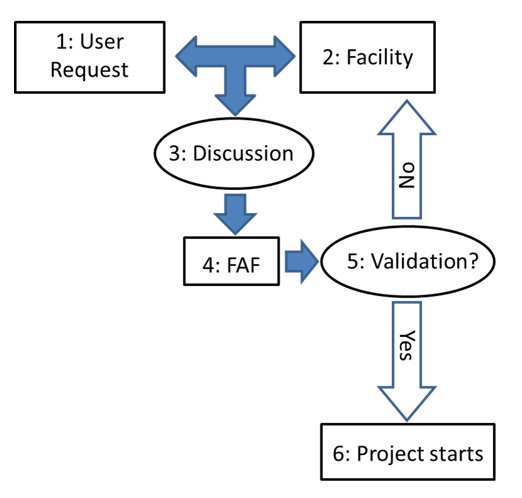The UK National Ion Beam Centre - Getting Access
There are five mechanisms through which users can gain access to these facilities:
- Commercial. The user pays for usage through the normal commercial route of each facility - contact each facility seperately for information on this
- New EPSRC Application. UKNIBC facilities can be requested as part of a conventional EPSRC grant application. If the grant is awarded then access will be automatically provided by the UKNIBC. In this case a Validator is not required since it is explicitly justified in the form we provide to go with your Case for Support.
- EPSRC Students. EPSRC funded students can access the UKNIBC in their own right. In this case the Validator is the student's supervisor, who has must confirm that the project is the student's and part of his project.
- Pump Priming. A proportion (10%) of UKNIBC time is earmarked for new projects that have no current EPSRC support, but where a limited amount of pump priming time is expected to generate results which can be used in new bids for EPSRC funding. In these cases there is no external validator but an expert from one of the other centres must agree that the work is of high enough quality.
- For EU (non UK) users it is possible to apply for time through the RADIATE project. Details on how to do this can be obtained from this link.
Routes 2-4 are funded by the EPSRC and are implemented by specifying Projects via a Facility Access Form (FAF). The purpose of the FAF is to
- Specify the project, together with names and details of people involved
- Specify the resource justification
- Properly document the basis of the Facility usage
The process for producing a FAF is as follows:

- A request is generated. This may be cold where a user approaches the Facility without any introduction. Or the Facility staff may have encouraged their contacts. Each Facility will have its own overall Contact person authorised to sign off the FAFs.
- Someone at the Local Facility (the Liaison Fellow, LF) is chosen to discuss the request with the user.
- The Discussion will be documented (via email), and may be as detailed and extended as required
- A FAF document is the result of this process. The FAF will contain all appropriate details, including the user's name (and also the PI's, if it is different). A Summary Statement of the Grant Holder shows how the proposed project is related to the EPSRC grant named. A Summary of UKNIBC Contribution to the Project includes the specifics of the work proposed at the Facility. This should be detailed enough to justify the resource requested. A Proposed Independent Validator (with email & website) is named by the user: the job of the Validator is to confirm that the proposed work is indeed in the scope of the named EPSRC grant. If the Validator cannot confirm this they are asked to say why. At present there is no formal need to demonstrate the quality of the proposal (except in the case of pump primers), but as a matter of good practise the UKNIBC should encourage high quality and discourage low quality proposals.
- The Validator is not a referee, although s/he is welcome (and encouraged) to make comments on proposal quality. Indeed, such comments will be helpful to rank proposals in the event that the UKNIBC is oversubscribed. However, the UKNIBC funding is classed by EPSRC as already refereed, so the primary purpose of the Validator is purely as an independent confirmation that UKNIBC resource is being applied appropriately.
- If the Validator declines to validate, they are asked for a reason by the UKNIBC, which communicates this to the proposer. But if the proposal is validated, the project starts immediately.




